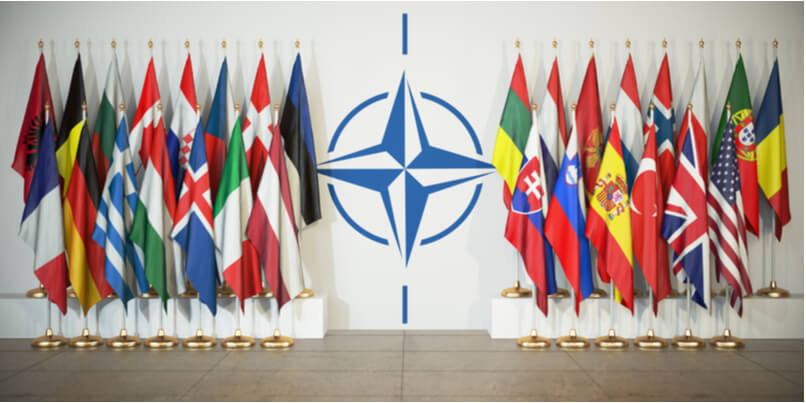 The individuals and teams that are involved in addressing the immediate and short-term effects of CBRNe emergencies span a diverse array of personnel - from police, paramedics and the fire brigade to hospital staff, crisis management teams and those tasked with detection, verification and warning.
The individuals and teams that are involved in addressing the immediate and short-term effects of CBRNe emergencies span a diverse array of personnel - from police, paramedics and the fire brigade to hospital staff, crisis management teams and those tasked with detection, verification and warning.
The consequences of CBRNe incidents can stretch national capabilities to their very limits, often relying on transnational cooperation in order to achieve a successful outcome.
In a bid to aid in the understanding and interoperability between nations, the North Atlantic Treaty Organisation (NATO) has formulated an International CBRN Training Curriculum that aims to improve civil emergency plans, complement national training courses and enhance civil-military cooperation during incidents.
The NATO curriculum provides a set of voluntary and non-binding guidelines that are designed to enable current and prospective first responders to build a common knowledge base and to achieve a minimum level of incident response preparedness.
The development of the curriculum was guided by four key principles:
- That the training that on offer be sufficiently adaptable and flexible in nature to accommodate the varying needs of different international emergency management structures.
- That it complement and enhance, but not seek to duplicate, existing CBRNe training programmes.
- That it encourage best practice by drawing from, and incorporating within it, the lessons learned from real-life CBRNe incidents.
- That it be deliberately modular in style to enable it to be offered in a variety of combinations to suit each nation's unique training needs.
The curriculum comprises ten core learning objectives:
1. Understanding the context of CBRNe response as it relates to current national and international security issues - including an overview of the evolving security environment post Cold War and its impacts on the movement of free trade; organised crime, globalisation and proliferation; the effects of low-probability/high-consequence attacks.
2. Aiding comprehension of awareness requirements as they relate to CBRNe response - including guidance on identifying the telltale signs of typical CBRNe agents, their characteristics and symptoms; understanding the effects of wind direction and weather conditions and recognising the consistency and drift direction of plumes.
3. Enhancing knowledge of the protection requirements of CBRNe response - including explaining and demonstrating the use of personal protective equipment (PPE); incorporating the use of simulants or live agents in training exercises where possible; maintaining physical security through an explanation of exclusion zones, safety rules, evacuation protocols, access corridors, geography, terrain and enclosed spaces.
4. Building understanding of the decontamination requirements of CBRNe response - including descriptions of the requirements and methods for the decontamination of personnel, vehicles, equipment and buildings; the decontamination of different population groups; and the thresholds, techniques and requirements of mass decontamination.
5. Developing the first aid skills relevant to CBRNe incidents - providing descriptions and illustrations of relevant first aid actions; exploring the requirements for psychological support for first responders before, during and after a CBRNe incident; and managing the expectations of first responders in relation to rescue and treatment outcomes.
6. Understanding the common detection requirements of CBRNe incident response - including the means and methods available for the effective detection of CBRNe agents, portable libraries of chemical agents, wind measurement tools and other resources; and an explanation of the operation, calibration and exercising of the most commonly used detection equipment.
7. Ensuring the comprehension of the command and control requirements of CBRNe incidents - providing a model of inter-team coordination during incidents that involve international assistance and how this compares with national models; identifying potential problem areas and differences in procedures, terminology, administrative structures and communication systems; exploring the basic principles of crisis communication including inter-agency communication, media management relationships and relaying information to the public at large.
8. Exploring the implications of bilateral or multilateral assistance for local first responders - including an examination of the problems that can arise during international CBRNe response such as differences in standards and procedures; language or glossaries of terms; the assignment of responsibilities; and the challenges that can occur as a result of interoperability.
9. Understanding the implications of civil-military cooperation during CBRNe incidents - exploring the potential issues, expectations and agendas that can arise during civil-military collaboration including the assignment of responsibilities and differences in mandates, procedures, regulations and readiness.
10. Building awareness of the capabilities and limitations of local crisis management structures and key services - providing an explanation of the key aspects of local and national emergency management structures, response times, specialist teams and contingency plans.
CBRNe incidents can challenge the capabilities of local, national and international emergency response organisations to their very limits.
Training initiatives such as that provided by the NATO CBRN curriculum can have a powerful role to play in both building and maintaining the efficiency and effectiveness of CBRNe best practice.
If you would like to stay up to date with key issues relevant to the delivery of your own CBRNe training then please subscribe to our monthly newsletter or register to take part in one of our upcoming live webinars.
